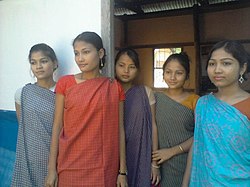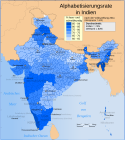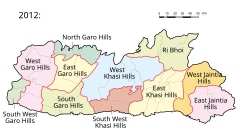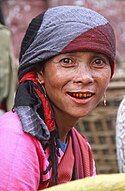Folk-tales of the Khasis (1920) (14777947484)
Identifier: folktalesofkhasi00rafy (find matches)
Title: Folk-tales of the Khasis
Year: 1920 (1920s)
Authors: Rafy, K. U
Subjects: Khasi (Indic people) Folklore -- India
Publisher: London : Macmillan and Co., Limited
Contributing Library: University of California Libraries
Digitizing Sponsor: MSN
View Book Page: Book Viewer
About This Book: Catalog Entry
View All Images: All Images From Book
Click here to view book online to see this illustration in context in a browseable online version of this book.
Text Appearing Before Image:
we will feast upontin- maiden. It happened that a Little mouse was foraging nearthe den at i hat time and she overheard the tiger mutter-ing to himself. She was very sorry for the maiden, forshe knew that she was alone and friendless and entirelyat the mercy of the tiger : so the little mouse went andtold the maiden that the tigers were going to kill her andeat her on the following day. Ka Nam was in greatdistress and wept very bitterly. She begged of themouse to help her to escape, and the mouse, having aler heart. Lra\e ),,..■ what aid was in her power. In 1 he first place she told t lie maiden to go out of thed< n and t<» seek the cave of the magician, U Hynroh,the Giant Toad, to whom the realm was under tribute. II- was a j vi-h and exacting monster from whom tiled, and Ka Nam would have been terrifiedto approach him under ordinary conditions, but theperil which faced her gave her courage, and under the lane* t the mouse she went to the toads cave. WHAT MAKES THE ECLIPSE
Text Appearing After Image:
FOLK-TALES OF THE KIIASIS i ■. bei and beheld how fair she was. and learned bow she had been the captive of his old rival the lily consented to give hei his protection ; ■ clol bed her in a toadskin, warning her not to divest ■ If ,,t it in the presence of others on pain of death,be did in order to keep the maiden in his own custody and to make her his slave. When the mouse saw that her beautiful friend hadi ransformed into the likeness of a hideous toad sheirrowful, and regretted having sent her tose< k the protection l U Hynroh, for she knew that aslong as she remained in the jungle Ka Nam would behenceforth forced to live with the toads and to be theirBlave. So she led her away secrelly and brought her tothe magic tree which was in that jungle, and told the maiden to climb into the tree that she might be trans-ported to the sky. where she would be safe from harm forcwr. So the maid climbed into the magic tree andspoke the magic words taught her by the mouse : Growt
Note About Images
Relevante Bilder
































Relevante Artikel
KhasiDie Khasi – Eigenname Ki Khasi oder Ki Khun U Hynniewtrep – sind ein indigenes Volk im Nordosten von Indien mit über 1,4 Millionen Angehörigen im kleinen Bundesstaat Meghalaya in den Vorläufern des Himalaya-Gebirge. Sie bilden dort etwa die Hälfte der Gesamtbevölkerung. Rund 35.000 Khasi leben im benachbarten Bundesstaat Assam und etwa 100.000 im südlich angrenzenden Bangladesch. Die Khasi bilden eine matrilineare Gesellschaft über Mütterlinien, bei denen Abstammung, Familienname und Erbfolge nur von der Mutter hergeleitet werden, nicht vom Vater. Diese Verhältnisse sind in der Verfassung von Meghalaya verankert, auch für das matrilineare Nachbarvolk der Garo; beide haben den Staat im Jahr 1972 begründet, die indische Verfassung garantiert ihnen besondere Schutz- und Selbstverwaltungsrechte als „registrierte Stammesgemeinschaften“. Nach der Khasi-Tradition liegt der Besitz von Grund und Boden nur in den Händen von Frauen, er sichert den Müttern und ihren Großfamilien soziale und wirtschaftliche Selbständigkeit und Absicherung. Männer gehören zur Großfamilie ihrer Mutter, erben von ihr den Familiennamen und die Clan-Zugehörigkeit und tragen zu ihrem Unterhalt bei; sie sind Teil der Solidargemeinschaft, können aber normalerweise kein Land erben. Nach einer Heirat zieht der Ehemann meist zu seiner Ehefrau und ihrer Mutter, seine Kinder werden ihrer Großfamilie zugehören. Der Bruder der Ehefrau gilt als ihr Beschützer und Berater und wird sich traditionell als sozialer Vater um ihre Kinder kümmern. .. weiterlesen
